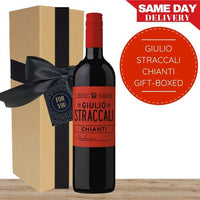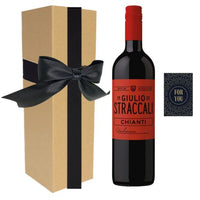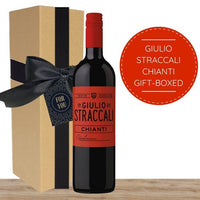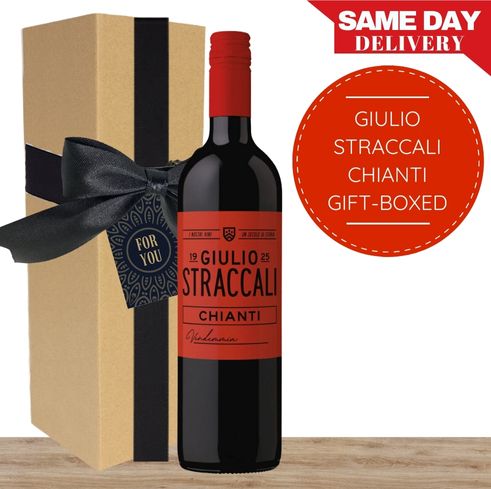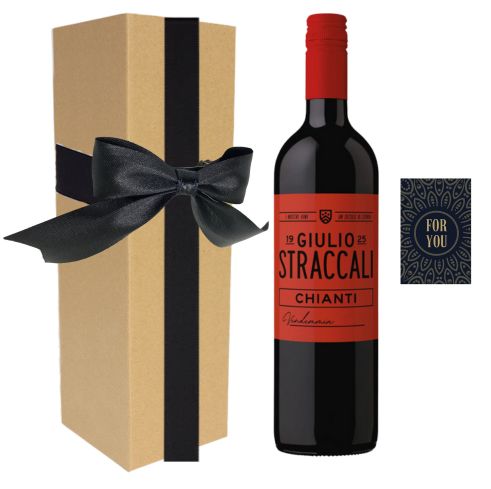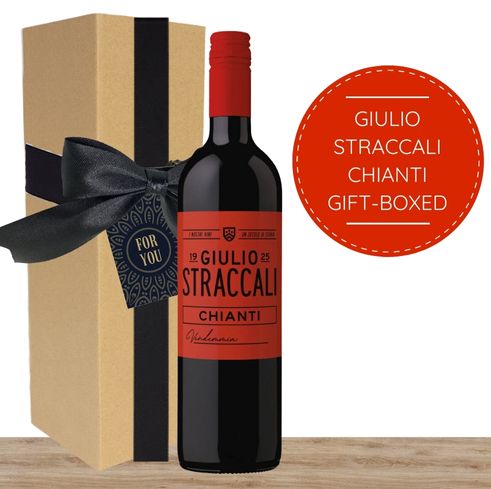[{"id":404934230248,"handle":"10-10-european-wine-sale","title":"10.10 European Wine Sale","updated_at":"2025-04-04T06:00:11+08:00","body_html":"","published_at":"2022-07-20T14:22:13+08:00","sort_order":"manual","template_suffix":"","disjunctive":true,"rules":[{"column":"title","relation":"contains","condition":"France"},{"column":"title","relation":"contains","condition":"Italy"},{"column":"title","relation":"contains","condition":"Spain"},{"column":"title","relation":"contains","condition":"Portugal"}],"published_scope":"global","image":{"created_at":"2022-07-20T14:24:50+08:00","alt":"","width":1080,"height":300,"src":"\/\/popupwine.com.sg\/cdn\/shop\/collections\/New_Year_Website_Collection_Banner_6913f01d-6f1a-40a3-821a-dd171c9da259.webp?v=1695619401"}},{"id":412473721064,"handle":"monthly-sale","title":"2.2 Sale","updated_at":"2025-04-04T08:40:21+08:00","body_html":"","published_at":"2023-03-27T15:24:07+08:00","sort_order":"manual","template_suffix":"pf-2f08e211","disjunctive":false,"rules":[{"column":"tag","relation":"equals","condition":"High Margin"},{"column":"variant_inventory","relation":"greater_than","condition":"1"}],"published_scope":"global"},{"id":427081892072,"handle":"2-2-sale","title":"2.2 SALE","updated_at":"2025-04-04T08:40:21+08:00","body_html":"","published_at":"2025-01-30T16:35:52+08:00","sort_order":"manual","template_suffix":"","disjunctive":false,"rules":[{"column":"tag","relation":"equals","condition":"High Margin"},{"column":"variant_inventory","relation":"greater_than","condition":"1"}],"published_scope":"global","image":{"created_at":"2025-01-30T16:35:51+08:00","alt":null,"width":1080,"height":300,"src":"\/\/popupwine.com.sg\/cdn\/shop\/collections\/6.6_Collection_Banner.webp?v=1738226151"}},{"id":417323843816,"handle":"3-3-sale","title":"3.3 Sale","updated_at":"2025-04-04T08:40:21+08:00","body_html":"\u003cspan data-mce-fragment=\"1\"\u003e200+ WINES \u0026amp; CHAMPAGNE ON SALE\u003c\/span\u003e","published_at":"2024-02-20T17:55:40+08:00","sort_order":"manual","template_suffix":"","disjunctive":false,"rules":[{"column":"tag","relation":"equals","condition":"High Margin"},{"column":"variant_inventory","relation":"greater_than","condition":"1"}],"published_scope":"global","image":{"created_at":"2024-02-20T17:55:38+08:00","alt":null,"width":1080,"height":300,"src":"\/\/popupwine.com.sg\/cdn\/shop\/collections\/3.3_Banner.webp?v=1708422938"}},{"id":413702979816,"handle":"4-4-european-wine-sale-1","title":"4.4 European Wine Sale","updated_at":"2025-04-04T06:00:11+08:00","body_html":"","published_at":"2023-08-21T17:55:39+08:00","sort_order":"price-asc","template_suffix":"","disjunctive":true,"rules":[{"column":"title","relation":"contains","condition":"France"},{"column":"title","relation":"contains","condition":"Italy"},{"column":"title","relation":"contains","condition":"Spain"},{"column":"title","relation":"contains","condition":"Portugal"}],"published_scope":"global","image":{"created_at":"2023-08-21T17:55:38+08:00","alt":null,"width":1080,"height":300,"src":"\/\/popupwine.com.sg\/cdn\/shop\/collections\/New_Year_Website_Collection_Banner_d94ec099-efdc-4f11-97c9-463150b2d5fb.webp?v=1692611738"}},{"id":418303770856,"handle":"4-4-sale","title":"4.4 Sale","updated_at":"2025-04-04T08:40:21+08:00","body_html":"","published_at":"2024-03-19T14:21:56+08:00","sort_order":"manual","template_suffix":"","disjunctive":false,"rules":[{"column":"tag","relation":"equals","condition":"High Margin"},{"column":"variant_inventory","relation":"greater_than","condition":"1"}],"published_scope":"global","image":{"created_at":"2024-03-19T14:21:54+08:00","alt":null,"width":1080,"height":300,"src":"\/\/popupwine.com.sg\/cdn\/shop\/collections\/New_Year_Website_Collection_Banner_53cefd37-a30e-4ee4-bd2c-a2451b132793.webp?v=1710829314"}},{"id":418305573096,"handle":"4-4-sale-french-italian-wines","title":"4.4 SALE FRENCH \u0026 ITALIAN WINES","updated_at":"2025-04-04T06:00:11+08:00","body_html":"","published_at":"2024-03-19T14:56:21+08:00","sort_order":"manual","template_suffix":"","disjunctive":true,"rules":[{"column":"title","relation":"contains","condition":"France"},{"column":"title","relation":"contains","condition":"Italy"}],"published_scope":"global","image":{"created_at":"2024-03-19T14:56:20+08:00","alt":null,"width":1080,"height":300,"src":"\/\/popupwine.com.sg\/cdn\/shop\/collections\/New_Year_Website_Collection_Banner_d60e2c4a-8775-45b8-9199-ddd655b80e42.webp?v=1710831381"}},{"id":412821881064,"handle":"5-5-italy-spain-wine-sale","title":"5.5 ITALY \u0026 SPAIN WINE SALE","updated_at":"2025-04-04T06:00:11+08:00","body_html":"","published_at":"2023-05-02T13:02:56+08:00","sort_order":"manual","template_suffix":"","disjunctive":true,"rules":[{"column":"title","relation":"contains","condition":"ITALY"},{"column":"title","relation":"contains","condition":"SPAIN"}],"published_scope":"global","image":{"created_at":"2023-05-02T13:02:55+08:00","alt":null,"width":1080,"height":300,"src":"\/\/popupwine.com.sg\/cdn\/shop\/collections\/5.5_Collection_Banner_53eaa494-09eb-478b-8dd1-eeeb4ca6e0a0.png?v=1683003776"}},{"id":412821651688,"handle":"5-5-sale","title":"5.5 Sale","updated_at":"2025-04-04T08:40:21+08:00","body_html":"","published_at":"2023-05-02T12:46:28+08:00","sort_order":"manual","template_suffix":"","disjunctive":false,"rules":[{"column":"tag","relation":"equals","condition":"High Margin"},{"column":"variant_inventory","relation":"greater_than","condition":"0"}],"published_scope":"global","image":{"created_at":"2023-05-02T12:47:24+08:00","alt":null,"width":1080,"height":300,"src":"\/\/popupwine.com.sg\/cdn\/shop\/collections\/5.5_Collection_Banner.png?v=1683002844"}},{"id":413001810152,"handle":"6-6-sale","title":"6.6 SALE","updated_at":"2025-04-04T08:40:21+08:00","body_html":"","published_at":"2023-05-29T11:51:57+08:00","sort_order":"manual","template_suffix":"","disjunctive":false,"rules":[{"column":"tag","relation":"equals","condition":"High Margin"},{"column":"variant_inventory","relation":"greater_than","condition":"0"}],"published_scope":"global","image":{"created_at":"2023-05-29T11:51:56+08:00","alt":null,"width":1080,"height":300,"src":"\/\/popupwine.com.sg\/cdn\/shop\/collections\/6.6_Collection_Banner.png?v=1685332316"}},{"id":413339025640,"handle":"7-7-italian-wine-sale","title":"7.7 ITALIAN WINE SALE","updated_at":"2025-04-03T16:05:40+08:00","body_html":"","published_at":"2023-07-03T19:16:05+08:00","sort_order":"price-asc","template_suffix":"","disjunctive":false,"rules":[{"column":"tag","relation":"equals","condition":"High Margin"},{"column":"tag","relation":"equals","condition":"Italy"}],"published_scope":"global","image":{"created_at":"2023-07-03T19:16:04+08:00","alt":null,"width":1080,"height":300,"src":"\/\/popupwine.com.sg\/cdn\/shop\/collections\/7.7_BANNER_1bbed9b1-eae0-4c85-b19c-5053862c7d7a.jpg?v=1688382965"}},{"id":413339058408,"handle":"7-7-sale","title":"7.7 SALE","updated_at":"2025-04-04T08:40:21+08:00","body_html":"","published_at":"2023-07-03T19:20:13+08:00","sort_order":"manual","template_suffix":"","disjunctive":false,"rules":[{"column":"tag","relation":"equals","condition":"High Margin"},{"column":"variant_inventory","relation":"greater_than","condition":"1"}],"published_scope":"global","image":{"created_at":"2023-07-03T19:20:12+08:00","alt":null,"width":1080,"height":300,"src":"\/\/popupwine.com.sg\/cdn\/shop\/collections\/7.7_BANNER_1cc08d4b-77ef-4d03-ae2e-965887205ff5.jpg?v=1688383212"}},{"id":413540450536,"handle":"8-8-french-italian-wines-sale","title":"8.8 French \u0026 Italian Wines Sale","updated_at":"2025-04-04T06:00:11+08:00","body_html":"","published_at":"2023-07-31T13:42:10+08:00","sort_order":"manual","template_suffix":"","disjunctive":true,"rules":[{"column":"title","relation":"contains","condition":"France"},{"column":"title","relation":"contains","condition":"Italy"}],"published_scope":"global","image":{"created_at":"2023-07-31T13:42:09+08:00","alt":null,"width":1080,"height":300,"src":"\/\/popupwine.com.sg\/cdn\/shop\/collections\/8.8_Collection_Banner_21794e61-f26d-4a04-ac00-e7c10d921974.webp?v=1690782129"}},{"id":413540155624,"handle":"8-8-sale","title":"8.8 SALE","updated_at":"2025-04-04T08:40:21+08:00","body_html":"","published_at":"2023-07-31T13:27:30+08:00","sort_order":"manual","template_suffix":"","disjunctive":false,"rules":[{"column":"tag","relation":"equals","condition":"High Margin"},{"column":"variant_inventory","relation":"greater_than","condition":"1"}],"published_scope":"global","image":{"created_at":"2023-07-31T13:27:29+08:00","alt":null,"width":1080,"height":300,"src":"\/\/popupwine.com.sg\/cdn\/shop\/collections\/8.8_Collection_Banner.webp?v=1690781249"}},{"id":22715961,"handle":"all","title":"All","updated_at":"2025-04-04T08:40:21+08:00","body_html":"PREMIUM WINES - DELIVERED TODAY - FROM THE WORLD'S BEST GROWING WINE REGIONS","published_at":"2019-08-08T18:04:10+08:00","sort_order":"price-asc","template_suffix":"","disjunctive":false,"rules":[{"column":"variant_price","relation":"greater_than","condition":"0"},{"column":"type","relation":"not_contains","condition":"Event"},{"column":"title","relation":"not_contains","condition":"beer"},{"column":"type","relation":"not_contains","condition":"Damaged Label"},{"column":"title","relation":"not_contains","condition":"Christmas Gift-Wrap \u0026 Personalised Christmas Card"},{"column":"title","relation":"not_contains","condition":"Event"},{"column":"title","relation":"not_contains","condition":"Glasses"},{"column":"type","relation":"not_contains","condition":"Events"},{"column":"type","relation":"not_contains","condition":"Hire"},{"column":"type","relation":"not_contains","condition":"Christmas Food"},{"column":"type","relation":"not_contains","condition":"Christmas"},{"column":"type","relation":"not_contains","condition":"Event Catering"},{"column":"type","relation":"not_contains","condition":"Wine Catering"},{"column":"type","relation":"not_contains","condition":"Event Equipment"},{"column":"type","relation":"not_contains","condition":"Events\/Media"},{"column":"type","relation":"not_contains","condition":"Warehouse Equipment"},{"column":"type","relation":"not_contains","condition":"Office Equipment"},{"column":"type","relation":"not_contains","condition":"OFFICE"}],"published_scope":"global","image":{"created_at":"2016-07-13T08:42:14+08:00","alt":null,"width":1733,"height":1155,"src":"\/\/popupwine.com.sg\/cdn\/shop\/collections\/Stocksy_txp91860811H1X000_Medium_433874-2.jpg?v=1468370534"}},{"id":413894377704,"handle":"all-collection","title":"All Collection","updated_at":"2025-04-04T08:40:21+08:00","body_html":"\u003cp\u003e1 HOUR DELIVERY\u003c\/p\u003e\n\u003c!----\u003e","published_at":"2023-09-21T11:53:33+08:00","sort_order":"price-asc","template_suffix":"","disjunctive":false,"rules":[{"column":"variant_price","relation":"greater_than","condition":"10"}],"published_scope":"global","image":{"created_at":"2023-09-21T11:53:47+08:00","alt":null,"width":1733,"height":1155,"src":"\/\/popupwine.com.sg\/cdn\/shop\/collections\/Stocksy_txp91860811H1X000_Medium_433874-2.webp?v=1695268427"}},{"id":420355834088,"handle":"all-wine-collection","title":"All Wine Collection","updated_at":"2025-04-04T08:40:21+08:00","body_html":"","published_at":"2024-05-31T13:45:23+08:00","sort_order":"price-asc","template_suffix":"","disjunctive":false,"rules":[{"column":"variant_price","relation":"greater_than","condition":"10"},{"column":"vendor","relation":"not_equals","condition":"B28 - Consignment"},{"column":"vendor","relation":"not_equals","condition":"ARDBEG"},{"column":"vendor","relation":"not_equals","condition":"ANTIQUARY"},{"column":"vendor","relation":"not_equals","condition":"Arran"},{"column":"vendor","relation":"not_equals","condition":"Amrut"},{"column":"vendor","relation":"not_equals","condition":"Le Vigne Whisky"},{"column":"vendor","relation":"not_equals","condition":"DAILUAINE"},{"column":"vendor","relation":"not_equals","condition":"Douglas Laing \u0026 Co"},{"column":"type","relation":"not_equals","condition":"Event"},{"column":"type","relation":"not_equals","condition":"Event Catering"},{"column":"type","relation":"not_equals","condition":"Events"},{"column":"type","relation":"not_equals","condition":"Wine Tasting"},{"column":"type","relation":"not_equals","condition":"Wine Catering"}],"published_scope":"global","image":{"created_at":"2024-05-31T13:45:57+08:00","alt":null,"width":1733,"height":1155,"src":"\/\/popupwine.com.sg\/cdn\/shop\/collections\/Stocksy_txp91860811H1X000_Medium_433874-2_1cf65e94-c571-4078-be92-abd0b6cf3db9.webp?v=1717134357"}},{"id":394004168936,"handle":"astrid-premium-wine-collection","title":"astrid - premium wine collection","updated_at":"2025-04-04T08:40:21+08:00","body_html":"","published_at":"2021-11-25T10:42:55+08:00","sort_order":"price-asc","template_suffix":"","disjunctive":false,"rules":[{"column":"variant_price","relation":"less_than","condition":"56"},{"column":"tag","relation":"equals","condition":"High Margin"}],"published_scope":"web"},{"id":409231786216,"handle":"black-friday","title":"Black Friday","updated_at":"2025-04-04T08:40:21+08:00","body_html":"","published_at":"2022-11-11T07:59:24+08:00","sort_order":"manual","template_suffix":"pf-8ea88873","disjunctive":false,"rules":[{"column":"tag","relation":"equals","condition":"High Margin"},{"column":"variant_inventory","relation":"greater_than","condition":"1"}],"published_scope":"global"},{"id":409232605416,"handle":"black-friday-sale-1","title":"BLACK FRIDAY SALE","updated_at":"2025-04-04T08:40:21+08:00","body_html":"","published_at":"2022-11-11T09:09:18+08:00","sort_order":"manual","template_suffix":"","disjunctive":false,"rules":[{"column":"variant_inventory","relation":"greater_than","condition":"1"}],"published_scope":"global","image":{"created_at":"2022-11-11T09:09:15+08:00","alt":null,"width":1080,"height":300,"src":"\/\/popupwine.com.sg\/cdn\/shop\/collections\/Black_Friday_Website_Collection_Banner_886dd99a-f41e-48a9-85d5-55789b3e9f69.png?v=1668128956"}},{"id":416306430184,"handle":"chinese-new-year-gifts-under-70","title":"CHINESE NEW YEAR - GIFTS UNDER $70","updated_at":"2025-04-04T06:25:05+08:00","body_html":"","published_at":"2024-01-10T15:54:49+08:00","sort_order":"manual","template_suffix":"","disjunctive":false,"rules":[{"column":"title","relation":"contains","condition":"GIFT"},{"column":"variant_price","relation":"less_than","condition":"71"},{"column":"type","relation":"not_contains","condition":"Valentine"}],"published_scope":"global","image":{"created_at":"2024-01-10T15:54:47+08:00","alt":null,"width":1080,"height":300,"src":"\/\/popupwine.com.sg\/cdn\/shop\/collections\/CNY_Website_Collection_Banner_ca39a41d-8ea7-42c6-96dd-262da679990e.png?v=1704899135"}},{"id":396488900840,"handle":"chinese-new-year","title":"Chinese New Year 2025","updated_at":"2025-04-04T08:40:21+08:00","body_html":"","published_at":"2022-01-19T11:00:00+08:00","sort_order":"manual","template_suffix":"pf-254bcaf9","disjunctive":true,"rules":[{"column":"tag","relation":"equals","condition":"High Margin"},{"column":"type","relation":"equals","condition":"CNY"}],"published_scope":"global"},{"id":409780715752,"handle":"chinese-new-year-sale","title":"Chinese New Year Sale","updated_at":"2025-04-04T08:40:21+08:00","body_html":"\u003cp\u003e\u003cspan data-mce-fragment=\"1\"\u003e3\u003c\/span\u003e\u003cspan data-mce-fragment=\"1\"\u003e00+ WINES ON SALE\u003c\/span\u003e\u003c\/p\u003e","published_at":"2022-12-27T16:44:06+08:00","sort_order":"manual","template_suffix":"","disjunctive":false,"rules":[{"column":"tag","relation":"equals","condition":"High Margin"},{"column":"type","relation":"not_contains","condition":"Events"},{"column":"type","relation":"not_contains","condition":"Event Catering"},{"column":"type","relation":"not_contains","condition":"event equipment"},{"column":"type","relation":"not_contains","condition":"Event"},{"column":"type","relation":"not_contains","condition":"Event Catering"},{"column":"type","relation":"not_contains","condition":"Valentine"},{"column":"variant_inventory","relation":"greater_than","condition":"1"}],"published_scope":"global","image":{"created_at":"2022-12-27T16:44:04+08:00","alt":null,"width":1080,"height":300,"src":"\/\/popupwine.com.sg\/cdn\/shop\/collections\/CNY_Website_Collection_Banner_05b25e7c-fed6-444b-ae61-9c204c37f0ad.png?v=1736304269"}},{"id":394298589416,"handle":"christmas-gifts-under-70","title":"CHRISTMAS - GIFTS UNDER $70","updated_at":"2025-04-04T06:25:05+08:00","body_html":"Wine gifts perfect for friends and work colleagues","published_at":"2021-12-01T14:44:20+08:00","sort_order":"manual","template_suffix":"","disjunctive":false,"rules":[{"column":"title","relation":"contains","condition":"gift"},{"column":"variant_price","relation":"less_than","condition":"71"},{"column":"variant_inventory","relation":"greater_than","condition":"0"}],"published_scope":"global","image":{"created_at":"2021-12-03T11:35:19+08:00","alt":null,"width":1080,"height":300,"src":"\/\/popupwine.com.sg\/cdn\/shop\/collections\/Christmas_Website_Collection_Banner.jpg?v=1638502519"}},{"id":415860424936,"handle":"christmas-wine-gifts","title":"Christmas Wine \u0026 Gifts","updated_at":"2025-04-04T08:40:21+08:00","body_html":"","published_at":"2023-12-22T14:58:32+08:00","sort_order":"manual","template_suffix":"","disjunctive":true,"rules":[{"column":"tag","relation":"equals","condition":"High Margin"},{"column":"type","relation":"equals","condition":"Christmas"},{"column":"type","relation":"equals","condition":"Gifts"},{"column":"variant_inventory","relation":"greater_than","condition":"1"}],"published_scope":"global","image":{"created_at":"2023-12-22T14:58:30+08:00","alt":null,"width":1080,"height":300,"src":"\/\/popupwine.com.sg\/cdn\/shop\/collections\/Stocksy_txpf0f271d6wnG300_Small_1611818_d14fa1f6-b3cb-4468-910e-a0d35c0a401c.webp?v=1703228311"}},{"id":405997486312,"handle":"cisco","title":"CISCO","updated_at":"2025-04-04T08:40:21+08:00","body_html":"","published_at":"2022-08-12T11:17:21+08:00","sort_order":"best-selling","template_suffix":"","disjunctive":false,"rules":[{"column":"tag","relation":"equals","condition":"High Margin"},{"column":"variant_inventory","relation":"greater_than","condition":"0"}],"published_scope":"global"},{"id":394189734120,"handle":"corporate-collection","title":"Corporate - Gifts \u0026 Office Wine","updated_at":"2025-04-04T06:25:05+08:00","body_html":"Great value wine for office parties \u0026amp; gifts","published_at":"2021-11-29T21:18:07+08:00","sort_order":"manual","template_suffix":"","disjunctive":false,"rules":[{"column":"title","relation":"contains","condition":"Gift"},{"column":"variant_price","relation":"less_than","condition":"101"},{"column":"variant_inventory","relation":"greater_than","condition":"0"}],"published_scope":"global","image":{"created_at":"2021-12-03T13:09:10+08:00","alt":null,"width":1080,"height":300,"src":"\/\/popupwine.com.sg\/cdn\/shop\/collections\/Gifts_Website_Collection_Banner_Man.jpg?v=1638508151"}},{"id":413895229672,"handle":"corporate-gifts-office-wine-collection","title":"Corporate - Gifts \u0026 Office Wine Collection","updated_at":"2025-04-04T06:25:05+08:00","body_html":"\u003cspan data-mce-fragment=\"1\"\u003eOffice parties \u0026amp; quick gifts with 1-hour delivery!\u003c\/span\u003e","published_at":"2023-09-21T16:57:48+08:00","sort_order":"manual","template_suffix":"","disjunctive":false,"rules":[{"column":"title","relation":"contains","condition":"Gift"},{"column":"variant_price","relation":"less_than","condition":"101"},{"column":"variant_inventory","relation":"greater_than","condition":"0"}],"published_scope":"global","image":{"created_at":"2023-09-21T16:59:17+08:00","alt":null,"width":1080,"height":300,"src":"\/\/popupwine.com.sg\/cdn\/shop\/collections\/Gifts_Website_Collection_Banner_Man.webp?v=1695286758"}},{"id":415791448296,"handle":"corporate-wine-gifting","title":"Corporate Wine Gifting","updated_at":"2025-04-04T06:25:05+08:00","body_html":"","published_at":"2023-12-19T14:20:19+08:00","sort_order":"best-selling","template_suffix":"pf-2299f4d3","disjunctive":false,"rules":[{"column":"type","relation":"equals","condition":"Gifts"},{"column":"variant_price","relation":"less_than","condition":"101"},{"column":"variant_inventory","relation":"greater_than","condition":"1"}],"published_scope":"global"},{"id":393888858344,"handle":"black-friday-sale","title":"CYBER MONDAY SALE","updated_at":"2025-04-04T08:40:21+08:00","body_html":"","published_at":"2021-11-23T09:12:14+08:00","sort_order":"best-selling","template_suffix":"collection","disjunctive":false,"rules":[{"column":"tag","relation":"equals","condition":"high margin"}],"published_scope":"web"},{"id":396318867688,"handle":"date-night","title":"Date Night Wines","updated_at":"2025-04-04T08:40:18+08:00","body_html":"","published_at":"2022-01-17T18:06:40+08:00","sort_order":"price-asc","template_suffix":"","disjunctive":false,"rules":[{"column":"tag","relation":"equals","condition":"High Margin"},{"column":"variant_price","relation":"less_than","condition":"81"},{"column":"variant_inventory","relation":"greater_than","condition":"0"},{"column":"variant_price","relation":"greater_than","condition":"39"}],"published_scope":"global","image":{"created_at":"2022-01-17T18:07:54+08:00","alt":null,"width":1080,"height":300,"src":"\/\/popupwine.com.sg\/cdn\/shop\/collections\/CNY_Website_Collection_Banner_4bc1c3ca-5a33-4050-bfef-645b937dd5d4.png?v=1644213328"}},{"id":267219566743,"handle":"european-classics","title":"European Classics","updated_at":"2025-04-04T06:00:11+08:00","body_html":"","published_at":"2021-05-21T16:58:11+08:00","sort_order":"price-asc","template_suffix":"","disjunctive":true,"rules":[{"column":"title","relation":"contains","condition":"France"},{"column":"title","relation":"contains","condition":"italy"},{"column":"title","relation":"contains","condition":"spain"},{"column":"title","relation":"contains","condition":"portugal"}],"published_scope":"global"},{"id":413164011752,"handle":"fathers-day","title":"Father's Day","updated_at":"2025-04-04T08:40:21+08:00","body_html":"","published_at":"2023-06-09T11:54:28+08:00","sort_order":"created-desc","template_suffix":"","disjunctive":true,"rules":[{"column":"type","relation":"equals","condition":"Bordeaux"},{"column":"type","relation":"equals","condition":"Red"},{"column":"type","relation":"equals","condition":"Red Blend"},{"column":"type","relation":"equals","condition":"Pinot Noir"},{"column":"type","relation":"equals","condition":"Shiraz"},{"column":"type","relation":"equals","condition":"Gifts"},{"column":"type","relation":"equals","condition":"Father' Day"},{"column":"type","relation":"equals","condition":"Father's Day"}],"published_scope":"global"},{"id":409974145256,"handle":"gift","title":"GIFT","updated_at":"2025-04-04T06:25:05+08:00","body_html":"\u003ca href=\"https:\/\/popupwine.com.sg\/collections\/all\" data-mce-fragment=\"1\" data-mce-href=\"https:\/\/popupwine.com.sg\/collections\/all\"\u003eWine\u003c\/a\u003e\u003cspan data-mce-fragment=\"1\"\u003e, \u003c\/span\u003e\u003ca href=\"https:\/\/popupwine.com.sg\/collections\/champagne\" data-mce-fragment=\"1\" data-mce-href=\"https:\/\/popupwine.com.sg\/collections\/champagne\"\u003eChampagne\u003c\/a\u003e\u003cspan data-mce-fragment=\"1\"\u003e \u0026amp; \u003c\/span\u003e\u003ca href=\"https:\/\/popupwine.com.sg\/collections\/whisky\" data-mce-fragment=\"1\" data-mce-href=\"https:\/\/popupwine.com.sg\/collections\/whisky\"\u003eWhisky\u003cspan data-mce-fragment=\"1\"\u003e \u003c\/span\u003e\u003c\/a\u003e\u003cspan data-mce-fragment=\"1\"\u003egifts wrapped, with a personalised note. \u003c\/span\u003e\u003ca href=\"https:\/\/popupwine.com.sg\/pages\/wine-delivery\" data-mce-fragment=\"1\" data-mce-href=\"https:\/\/popupwine.com.sg\/pages\/wine-delivery\"\u003eDelivered same-day in Singapore\u003c\/a\u003e\u003cspan data-mce-fragment=\"1\"\u003e.\u003c\/span\u003e","published_at":"2023-01-11T12:03:35+08:00","sort_order":"best-selling","template_suffix":"","disjunctive":true,"rules":[{"column":"type","relation":"equals","condition":"Gifts"},{"column":"type","relation":"equals","condition":"Gift Card"},{"column":"type","relation":"equals","condition":"Gift Cards"},{"column":"type","relation":"equals","condition":"Gift Wrap"},{"column":"type","relation":"equals","condition":"Chocolate"},{"column":"type","relation":"equals","condition":"CNY"}],"published_scope":"global","image":{"created_at":"2024-01-10T13:05:29+08:00","alt":null,"width":1080,"height":300,"src":"\/\/popupwine.com.sg\/cdn\/shop\/collections\/CNY_Website_Collection_Banner_72097416-bff1-4658-a372-7bcd7376db4c.png?v=1704863129"}},{"id":394499358952,"handle":"gift-box","title":"GIFT BOXED WINE \u0026 CHAMPAGNE","updated_at":"2025-04-04T06:25:05+08:00","body_html":"Gift boxed wine \u0026amp; whisky. Or choose your own box","published_at":"2021-12-06T07:31:17+08:00","sort_order":"price-asc","template_suffix":"","disjunctive":false,"rules":[{"column":"title","relation":"contains","condition":"GIFT BOX"},{"column":"variant_inventory","relation":"greater_than","condition":"0"}],"published_scope":"global","image":{"created_at":"2021-12-06T07:32:29+08:00","alt":null,"width":1080,"height":300,"src":"\/\/popupwine.com.sg\/cdn\/shop\/collections\/Gifts_Website_Collection_Banner.png?v=1638747150"}},{"id":394235642088,"handle":"gifts","title":"Gifts","updated_at":"2025-04-04T06:25:05+08:00","body_html":"","published_at":"2021-11-30T13:28:17+08:00","sort_order":"manual","template_suffix":"pf-1ddff613","disjunctive":true,"rules":[{"column":"type","relation":"equals","condition":"CNY"},{"column":"type","relation":"equals","condition":"Corporate"},{"column":"type","relation":"equals","condition":"Gifts"},{"column":"type","relation":"equals","condition":"Christmas"},{"column":"type","relation":"equals","condition":"New Year"}],"published_scope":"global"},{"id":413626237160,"handle":"high-margin-wines","title":"High Margin Wines","updated_at":"2025-04-04T08:40:21+08:00","body_html":"","published_at":"2023-08-07T15:55:06+08:00","sort_order":"price-asc","template_suffix":"","disjunctive":false,"rules":[{"column":"tag","relation":"equals","condition":"High Margin"},{"column":"title","relation":"not_contains","condition":"pack"}],"published_scope":"global"},{"id":394362159336,"handle":"holiday-gifts","title":"holiday gifts","updated_at":"2025-04-04T06:25:05+08:00","body_html":"","published_at":"2021-12-02T15:46:46+08:00","sort_order":"best-selling","template_suffix":"pf-264257b8","disjunctive":false,"rules":[{"column":"title","relation":"contains","condition":"gift"},{"column":"type","relation":"not_equals","condition":"Corporate"},{"column":"type","relation":"not_equals","condition":"Christmas"}],"published_scope":"global"},{"id":206858879127,"handle":"carro-collection","title":"Influencers Collection","updated_at":"2025-04-04T08:40:21+08:00","body_html":"","published_at":"2020-07-15T16:17:55+08:00","sort_order":"price-asc","template_suffix":"","disjunctive":false,"rules":[{"column":"tag","relation":"equals","condition":"High Margin"},{"column":"variant_price","relation":"less_than","condition":"61"},{"column":"title","relation":"not_contains","condition":"Pack"}],"published_scope":"web"},{"id":191031812,"handle":"italian-wine","title":"Italian Wine","updated_at":"2025-04-04T06:00:11+08:00","body_html":"\u003cmeta charset=\"utf-8\"\u003e\n\u003ch3\u003ePREMIUM ITALIAN WINES - DELIVERED TODAY\u003cspan\u003e \u003c\/span\u003e- FROM ITALY'S BEST GROWING WINE REGIONS\u003c\/h3\u003e","published_at":"2016-08-09T17:28:00+08:00","sort_order":"price-asc","template_suffix":"pf-4df67992","disjunctive":true,"rules":[{"column":"title","relation":"contains","condition":"Italy"},{"column":"tag","relation":"equals","condition":"Italy"},{"column":"tag","relation":"equals","condition":"Italian"}],"published_scope":"global"},{"id":413238755560,"handle":"italian-wines","title":"Italian Wines","updated_at":"2025-04-04T06:00:11+08:00","body_html":"\u003ch3 data-mce-fragment=\"1\"\u003ePREMIUM ITALIAN WINES - DELIVERED TODAY\u003cspan data-mce-fragment=\"1\"\u003e \u003c\/span\u003e- FROM ITALY'S BEST GROWING WINE REGIONS\u003c\/h3\u003e","published_at":"2023-06-14T10:39:24+08:00","sort_order":"price-asc","template_suffix":"","disjunctive":true,"rules":[{"column":"title","relation":"contains","condition":"Italy"},{"column":"tag","relation":"equals","condition":"Italy"},{"column":"tag","relation":"equals","condition":"Italian"},{"column":"tag","relation":"equals","condition":"Italian wine"}],"published_scope":"global","image":{"created_at":"2023-06-14T10:42:32+08:00","alt":null,"width":866,"height":433,"src":"\/\/popupwine.com.sg\/cdn\/shop\/collections\/Pop_Up_Wine_Tasting_1_edited_b96baaec-694c-483b-9c3c-2818fe82d201.webp?v=1686710552"}},{"id":277260566679,"handle":"italy-top-picks","title":"Italy - Top Picks","updated_at":"2025-04-03T16:05:40+08:00","body_html":"","published_at":"2021-09-14T11:58:43+08:00","sort_order":"price-asc","template_suffix":"","disjunctive":false,"rules":[{"column":"tag","relation":"equals","condition":"High Margin"},{"column":"title","relation":"contains","condition":"Italy"}],"published_scope":"global"},{"id":188931652,"handle":"new","title":"New","updated_at":"2025-04-04T08:40:21+08:00","body_html":"","published_at":"2016-07-21T08:43:00+08:00","sort_order":"manual","template_suffix":"","disjunctive":false,"rules":[{"column":"variant_inventory","relation":"greater_than","condition":"1"}],"published_scope":"global"},{"id":395242930408,"handle":"new-year-wines","title":"NEW YEAR","updated_at":"2025-04-04T08:40:21+08:00","body_html":"CELEBRATE WITH AWARD-WINNING WINES","published_at":"2021-12-23T14:17:45+08:00","sort_order":"manual","template_suffix":"","disjunctive":true,"rules":[{"column":"tag","relation":"equals","condition":"High Margin"},{"column":"tag","relation":"equals","condition":"Champagne"},{"column":"tag","relation":"equals","condition":"Sparkling"}],"published_scope":"global","image":{"created_at":"2021-12-24T11:00:56+08:00","alt":null,"width":1080,"height":300,"src":"\/\/popupwine.com.sg\/cdn\/shop\/collections\/New_Year_Website_Collection_Banner.png?v=1640314856"}},{"id":395158192360,"handle":"new-year","title":"NEW YEAR Landing Page","updated_at":"2025-04-04T08:40:21+08:00","body_html":"","published_at":"2021-12-21T15:16:34+08:00","sort_order":"price-asc","template_suffix":"pf-11a4201d","disjunctive":true,"rules":[{"column":"tag","relation":"equals","condition":"High Margin"},{"column":"tag","relation":"equals","condition":"champagne"},{"column":"tag","relation":"equals","condition":"sparkling"}],"published_scope":"global"},{"id":279333339287,"handle":"open-house-wine-tasting-sale","title":"OPEN HOUSE WINE TASTING \u0026 SALE","updated_at":"2025-04-04T08:40:21+08:00","body_html":"","published_at":"2022-02-25T13:07:11+08:00","sort_order":"manual","template_suffix":"collection","disjunctive":false,"rules":[{"column":"variant_price","relation":"greater_than","condition":"19"},{"column":"title","relation":"not_contains","condition":"CATERING"}],"published_scope":"global"},{"id":378889732328,"handle":"open-house-wine-tasting-sale-1","title":"Open House Wine Tasting \u0026 Sale","updated_at":"2025-04-04T08:40:21+08:00","body_html":"","published_at":"2021-11-10T13:39:26+08:00","sort_order":"manual","template_suffix":"collection","disjunctive":false,"rules":[{"column":"variant_price","relation":"greater_than","condition":"19"},{"column":"title","relation":"not_contains","condition":"CATERING"}],"published_scope":"global","image":{"created_at":"2023-07-13T10:31:53+08:00","alt":null,"width":1080,"height":300,"src":"\/\/popupwine.com.sg\/cdn\/shop\/collections\/Warehouse_Collection_Banner.webp?v=1693297028"}},{"id":405997715688,"handle":"primetime","title":"PrimeTime","updated_at":"2025-04-04T08:40:21+08:00","body_html":"","published_at":"2022-08-12T11:21:42+08:00","sort_order":"best-selling","template_suffix":"","disjunctive":false,"rules":[{"column":"tag","relation":"equals","condition":"High Margin"},{"column":"variant_inventory","relation":"greater_than","condition":"0"}],"published_scope":"global"},{"id":68282417195,"handle":"region","title":"Region","updated_at":"2025-04-04T08:40:21+08:00","body_html":"INTERNATIONAL WINES","published_at":"2019-05-09T16:34:54+08:00","sort_order":"price-asc","template_suffix":"","disjunctive":false,"rules":[{"column":"type","relation":"not_contains","condition":"Box"},{"column":"type","relation":"not_equals","condition":"Event"},{"column":"type","relation":"not_equals","condition":"Events"},{"column":"type","relation":"not_equals","condition":"Hire"},{"column":"type","relation":"not_equals","condition":"Service"},{"column":"type","relation":"not_equals","condition":"Shopify"},{"column":"type","relation":"not_equals","condition":"Invoice"},{"column":"type","relation":"not_equals","condition":"Christmas"},{"column":"type","relation":"not_equals","condition":"Corporate"}],"published_scope":"global","image":{"created_at":"2023-09-28T00:30:17+08:00","alt":"Region - Pop Up Wine","width":1200,"height":800,"src":"\/\/popupwine.com.sg\/cdn\/shop\/collections\/Stocksy_txp4e41f11drc5100_Medium_382369_edited_b884ac0a-a82c-482d-a89d-4ed173dfd97c.jpg?v=1695832218"}},{"id":412120056040,"handle":"rocca-delle-macie-wines","title":"ROCCA DELLE MACIE WINES","updated_at":"2025-04-03T15:58:31+08:00","body_html":"","published_at":"2023-03-03T15:08:37+08:00","sort_order":"best-selling","template_suffix":"","disjunctive":true,"rules":[{"column":"vendor","relation":"contains","condition":"Rocca Delle macie"},{"column":"vendor","relation":"contains","condition":"Rocca delle Macie SPA"}],"published_scope":"global"},{"id":413401153768,"handle":"straccali","title":"Straccali","updated_at":"2025-04-03T15:56:57+08:00","body_html":"","published_at":"2023-07-14T10:49:47+08:00","sort_order":"price-asc","template_suffix":"","disjunctive":false,"rules":[{"column":"title","relation":"contains","condition":"Straccali"}],"published_scope":"global"},{"id":414223270120,"handle":"test","title":"Test","updated_at":"2025-04-04T06:00:11+08:00","body_html":"","published_at":"2023-10-16T18:06:45+08:00","sort_order":"price-asc","template_suffix":"","disjunctive":false,"rules":[{"column":"variant_inventory","relation":"greater_than","condition":"1"},{"column":"variant_inventory","relation":"less_than","condition":"21"}],"published_scope":"global"},{"id":264160870551,"handle":"top-picks-wines","title":"TOP PICKS","updated_at":"2025-04-04T08:40:21+08:00","body_html":"","published_at":"2021-04-13T12:38:32+08:00","sort_order":"price-asc","template_suffix":"","disjunctive":false,"rules":[{"column":"tag","relation":"equals","condition":"High Margin"}],"published_scope":"global"},{"id":405508653288,"handle":"top-rated-wines","title":"Top Rated Wines","updated_at":"2025-04-04T08:40:21+08:00","body_html":"","published_at":"2022-08-03T13:42:51+08:00","sort_order":"best-selling","template_suffix":"","disjunctive":false,"rules":[{"column":"variant_inventory","relation":"greater_than","condition":"0"},{"column":"tag","relation":"equals","condition":"High Margin"}],"published_scope":"global","image":{"created_at":"2023-09-28T01:29:46+08:00","alt":"Top Rated Wines - Pop Up Wine","width":1080,"height":300,"src":"\/\/popupwine.com.sg\/cdn\/shop\/collections\/top-rated-wines-pop-up-wine.webp?v=1695835786"}},{"id":396119179496,"handle":"top-wines-2021","title":"Top Wines 2021","updated_at":"2025-04-04T08:40:21+08:00","body_html":"","published_at":"2022-01-12T19:02:40+08:00","sort_order":"best-selling","template_suffix":"collection","disjunctive":false,"rules":[{"column":"tag","relation":"equals","condition":"High Margin"}],"published_scope":"web"},{"id":404110147816,"handle":"top-wines-mid-2022","title":"Top Wines Mid 2022","updated_at":"2025-04-04T08:40:21+08:00","body_html":"","published_at":"2022-06-29T15:13:04+08:00","sort_order":"best-selling","template_suffix":"","disjunctive":false,"rules":[{"column":"tag","relation":"equals","condition":"High Margin"}],"published_scope":"global"},{"id":399821242600,"handle":"tuscany-wines","title":"Tuscan Wines","updated_at":"2025-04-04T06:00:11+08:00","body_html":"","published_at":"2022-03-31T17:30:09+08:00","sort_order":"manual","template_suffix":"","disjunctive":false,"rules":[{"column":"title","relation":"contains","condition":"Tuscany"}],"published_scope":"global"},{"id":409386483944,"handle":"under-100","title":"under $100","updated_at":"2025-04-04T08:40:21+08:00","body_html":"","published_at":"2022-11-22T09:42:12+08:00","sort_order":"manual","template_suffix":"","disjunctive":true,"rules":[{"column":"variant_price","relation":"less_than","condition":"101"},{"column":"variant_inventory","relation":"greater_than","condition":"0"},{"column":"title","relation":"not_equals","condition":"South East Asia's Wine Boom ~ Expert Discussion ~ Pop Up Wine Warehouse ~ Thurs 27 April ~ 6-7:30pm"}],"published_scope":"global","image":{"created_at":"2023-09-28T01:29:49+08:00","alt":"under $100 - Pop Up Wine","width":1080,"height":300,"src":"\/\/popupwine.com.sg\/cdn\/shop\/collections\/under-dollar100-pop-up-wine.webp?v=1695835790"}},{"id":407327080680,"handle":"under-60","title":"Under $60","updated_at":"2025-04-04T08:40:21+08:00","body_html":"","published_at":"2022-09-14T12:28:00+08:00","sort_order":"best-selling","template_suffix":"","disjunctive":true,"rules":[{"column":"variant_price","relation":"less_than","condition":"60"},{"column":"title","relation":"not_contains","condition":"South East Asia's Wine Boom ~ Expert Discussion ~ Pop Up Wine Warehouse ~ Thurs 27 April ~ 6-7:30pm"},{"column":"title","relation":"not_contains","condition":"Pack"}],"published_scope":"global","image":{"created_at":"2023-09-28T01:30:05+08:00","alt":"Under $60 - Pop Up Wine","width":1080,"height":300,"src":"\/\/popupwine.com.sg\/cdn\/shop\/collections\/under-dollar60-pop-up-wine.jpg?v=1695835805"}},{"id":399428190440,"handle":"unique-gifts","title":"Unique gifts","updated_at":"2025-04-04T06:25:05+08:00","body_html":"","published_at":"2022-03-23T14:33:20+08:00","sort_order":"price-asc","template_suffix":"","disjunctive":false,"rules":[{"column":"title","relation":"contains","condition":"gift"},{"column":"title","relation":"not_equals","condition":"GIFT WRAP \u0026 PERSONALISED GIFT CARD"},{"column":"title","relation":"not_equals","condition":"PREMIUM GIFT BOX - RED INTERIOR"},{"column":"title","relation":"not_equals","condition":"PREMIUM CHRISTMAS GIFT HAMPER - AVAILABLE WHEN BUYING ANY WINES OR WHISKIES"},{"column":"variant_inventory","relation":"greater_than","condition":"0"}],"published_scope":"global"},{"id":396317950184,"handle":"valentine-sale","title":"Valentine Sale","updated_at":"2025-04-04T08:40:21+08:00","body_html":"","published_at":"2022-01-17T17:36:38+08:00","sort_order":"manual","template_suffix":"","disjunctive":true,"rules":[{"column":"tag","relation":"equals","condition":"High Margin"},{"column":"type","relation":"equals","condition":"Valentine"},{"column":"variant_inventory","relation":"greater_than","condition":"2"}],"published_scope":"web","image":{"created_at":"2023-09-28T00:31:20+08:00","alt":"Valentine Sale - Pop Up Wine","width":1080,"height":300,"src":"\/\/popupwine.com.sg\/cdn\/shop\/collections\/CNY_Website_Collection_Banner_3c553ffa-29ec-4466-98bc-ede3ae0ee7e3.png?v=1695832281"}},{"id":397422199016,"handle":"valentine","title":"Valentine's Day Wine","updated_at":"2025-04-04T08:40:21+08:00","body_html":"","published_at":"2022-02-07T16:14:09+08:00","sort_order":"manual","template_suffix":"pf-b8b0d824","disjunctive":true,"rules":[{"column":"tag","relation":"equals","condition":"High Margin"},{"column":"type","relation":"equals","condition":"Valentine"}],"published_scope":"global"},{"id":416455622888,"handle":"warehouse-sale","title":"WAREHOUSE SALE","updated_at":"2025-04-04T08:40:21+08:00","body_html":"","published_at":"2024-01-16T09:49:03+08:00","sort_order":"manual","template_suffix":"pf-98322939","disjunctive":false,"rules":[{"column":"type","relation":"not_contains","condition":"Event Catering"},{"column":"type","relation":"not_contains","condition":"event equipment"},{"column":"type","relation":"not_contains","condition":"Events\/Media"},{"column":"type","relation":"not_contains","condition":"Beer"},{"column":"type","relation":"not_contains","condition":"Hire"},{"column":"variant_inventory","relation":"greater_than","condition":"1"}],"published_scope":"global"},{"id":413895000296,"handle":"white-wine-collection","title":"White Wine Collection","updated_at":"2025-04-04T08:40:21+08:00","body_html":"1 Hour Delivery","published_at":"2023-09-21T16:13:06+08:00","sort_order":"manual","template_suffix":"","disjunctive":true,"rules":[{"column":"type","relation":"equals","condition":"BLANC"},{"column":"type","relation":"equals","condition":"Chablis"},{"column":"type","relation":"equals","condition":"Chardonnay"},{"column":"type","relation":"equals","condition":"Chardonnay Box"},{"column":"type","relation":"equals","condition":"Pinot Gris \/ Grigio"},{"column":"type","relation":"equals","condition":"Riesling"},{"column":"type","relation":"equals","condition":"Roussanne"},{"column":"type","relation":"equals","condition":"Roussanne Box"},{"column":"type","relation":"equals","condition":"Riesling Box"},{"column":"type","relation":"equals","condition":"SAUTERNES"},{"column":"type","relation":"equals","condition":"Sauvignon Blanc Semillon"},{"column":"type","relation":"equals","condition":"Sauvignon Blanc"},{"column":"type","relation":"equals","condition":"semillon"},{"column":"type","relation":"equals","condition":"Semillon Sauvignon Blanc"},{"column":"type","relation":"equals","condition":"Semillon Sauvignon Blanc Box"},{"column":"type","relation":"equals","condition":"Sauvignon Blanc Box"},{"column":"type","relation":"equals","condition":"Sauvignon Blanc Semillion"},{"column":"type","relation":"equals","condition":"Soave"},{"column":"type","relation":"equals","condition":"Viognier"},{"column":"type","relation":"equals","condition":"White Blend"},{"column":"type","relation":"equals","condition":"White Blend Box"},{"column":"type","relation":"equals","condition":"White Blend"},{"column":"type","relation":"equals","condition":"White Box"},{"column":"type","relation":"equals","condition":"Vermentino"},{"column":"type","relation":"equals","condition":"Vernaccia"},{"column":"type","relation":"not_equals","condition":"Christmas"}],"published_scope":"global","image":{"created_at":"2023-09-21T16:13:19+08:00","alt":"White Wine Collection - Pop Up Wine","width":1200,"height":800,"src":"\/\/popupwine.com.sg\/cdn\/shop\/collections\/Stocksy_txp7c04dc27bW5100_Medium_903804_edited_8e300691-6ed1-4cde-a277-d01fe959d574.webp?v=1695832275"}},{"id":409623003368,"handle":"wine-whisky-champagne-gifts-gourmet-food-hampers","title":"Wine, Whisky, Champagne Gifts \u0026 Gourmet Food Hampers","updated_at":"2025-04-04T06:25:05+08:00","body_html":"Wine, Champagne \u0026amp; Whisky gifts wrapped with a card with your personal message. Delivered same-day in Singapore","published_at":"2022-12-12T16:31:32+08:00","sort_order":"price-asc","template_suffix":"","disjunctive":true,"rules":[{"column":"type","relation":"equals","condition":"Christmas"},{"column":"type","relation":"equals","condition":"Corporate"},{"column":"type","relation":"equals","condition":"Gifts"},{"column":"type","relation":"equals","condition":"CNY"},{"column":"type","relation":"equals","condition":"New Year"},{"column":"type","relation":"equals","condition":"cny"}],"published_scope":"global","image":{"created_at":"2022-12-12T16:41:31+08:00","alt":null,"width":1080,"height":300,"src":"\/\/popupwine.com.sg\/cdn\/shop\/collections\/present_wine_website.webp?v=1699605500"}}]
["High Margin","Italy","Wholesale"]
Skip to content
Home
›
Giulio Straccali Chianti 2022 - Tuscany, Italy Gift Box
Giulio Straccali Chianti 2022 - Tuscany, Italy Gift Box
Celebrate the essence of Tuscany, Italy, with an eco-friendly gift box designed for a luxurious presentation. Elevate your gifting experience with this thoughtfully adorned packaging, complete with a personalized gift card—an ideal choice for those who appreciate sustainable yet sophisticated gifts.
1 x Giulio Straccali Chianti 2022 - Tuscany, Italy
Bronze - James Suckling (2021 vintage) Bronze - James Suckling (2019 vintage)Bronze - Wine Spectator (2018 vintage)Bronze - James Suckling (2017 vintage)Bronze - James Suckling (2016 vintage)Bronze - Wine Spectator (2016 vintage)91/100 James Suckling (2015 vintage)Bronze - Wine Enthusiast (2015 vintage)Bronze - Wine Spectator (2015 vintage)Organic - currently undergoing certification James Suckling "cherry and orange-peel character. Some light chocolate, too. Light body, firm tannins and a fresh finish."James Suckling "A delicate, fruity Chianti with cherry, floral and dried-citrus character. It’s medium-to light-bodied with a fresh finish." (2019 vintage)Wine Spectator "The core flavor of cherry is shaded by earth, iron and leafy underbrush notes. Fills out midpalate, ending on the astringent side." (2018 vintage)James Suckling "Slightly candied fruit to this Chianti with medium body, soft texture and an easy finish." (2017 vintage)James Suckling "Aromas of lemon rind, cherries and iron follow through to a medium-bodied palate with fine tannins. A fresh finish. A light and delicious red."(2016 vintage)Wine Spectator "The flavors of cherry jam are backed by light yet firm tannins in this easygoing red." (2016 vintage)James Suckling "The nose of this red suggests dark cherries with cracked pepper and fresh herbs. Shows raspberry flavors with a fine thread of acidity that guides the palate to a clean finish." (2015 vintage)Wine Enthusiast "This easy-drinking Chianti opens with subtle red-skinned fruit and leather aromas. The tannins are rather evolved for such a young, simple wine, so drink soon to capture the red cherry and raspberry fruit." (2015 vintage)Wine Spectator "Cherry pie and strawberry jam flavors are bright in this straightforward, fruity red. Firms up, with a pleasantly astringent finish." (2015 vintage)
Celebrate the essence of Tuscany, Italy, with an eco-friendly gift box designed for a luxurious presentation. Elevate your gifting experience with this thoughtfully adorned packaging, complete with a personalized gift card—an ideal choice for those who appreciate sustainable yet sophisticated gifts.
1 x Giulio Straccali Chianti 2022 - Tuscany, Italy
Bronze - James Suckling (2021 vintage) Bronze - James Suckling (2019 vintage)Bronze - Wine Spectator (2018 vintage)Bronze - James Suckling (2017 vintage)Bronze - James Suckling (2016 vintage)Bronze - Wine Spectator (2016 vintage)91/100 James Suckling (2015 vintage)Bronze - Wine Enthusiast (2015 vintage)Bronze - Wine Spectator (2015 vintage)Organic - currently undergoing certification James Suckling "cherry and orange-peel character. Some light chocolate, too. Light body, firm tannins and a fresh finish."James Suckling "A delicate, fruity Chianti with cherry, floral and dried-citrus character. It’s medium-to light-bodied with a fresh finish." (2019 vintage)Wine Spectator "The core flavor of cherry is shaded by earth, iron and leafy underbrush notes. Fills out midpalate, ending on the astringent side." (2018 vintage)James Suckling "Slightly candied fruit to this Chianti with medium body, soft texture and an easy finish." (2017 vintage)James Suckling "Aromas of lemon rind, cherries and iron follow through to a medium-bodied palate with fine tannins. A fresh finish. A light and delicious red."(2016 vintage)Wine Spectator "The flavors of cherry jam are backed by light yet firm tannins in this easygoing red." (2016 vintage)James Suckling "The nose of this red suggests dark cherries with cracked pepper and fresh herbs. Shows raspberry flavors with a fine thread of acidity that guides the palate to a clean finish." (2015 vintage)Wine Enthusiast "This easy-drinking Chianti opens with subtle red-skinned fruit and leather aromas. The tannins are rather evolved for such a young, simple wine, so drink soon to capture the red cherry and raspberry fruit." (2015 vintage)Wine Spectator "Cherry pie and strawberry jam flavors are bright in this straightforward, fruity red. Firms up, with a pleasantly astringent finish." (2015 vintage)
